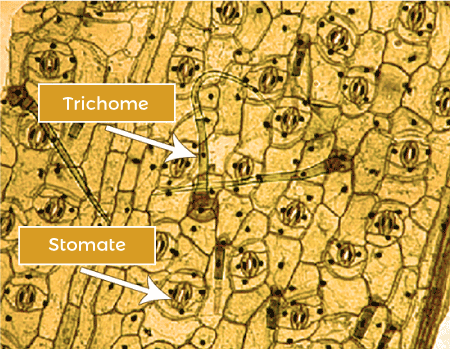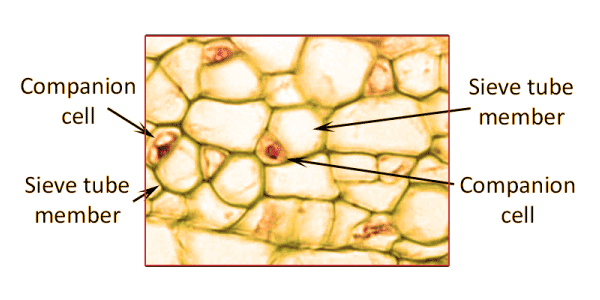Types of plant Cell
Cells make a basic structure of a living organism. Plant cells are a group of eukaryotic cells that belong to the plant kingdom which make their food by using carbon dioxide, water, and sunlight.
A cell is present on the tip of the plant root. It is the origin of a cell from where it multiplies itself, and further plant development occurs. The multiplication takes from undifferentiated meristematic cells to other tissues and specialized cells. A plant is divided into two systems:-
- The root system
- The shoot system
- The root system is made of tubers, roots, and rhizobial structure. The root is the origin of the growth of plants.
- The shoot system consists of leaves, stems, fruits, flowers, etc.
These systems are structured differently and defined by special cells that perform various functions like protection, support, development, and reproduction. A process named mitosis (where plant cells multiply) occurs within its nucleus. The process of mitosis takes place at the meristem that is present on the tip of the root and shoot of vascular plants and known as apical and lateral meristems.
- Apical meristems help in producing the roots.
- Lateral meristems are responsible for the growth of the stem wood and cork.
The combination of cells that forms the tissue and tissues makes the plants grow. Different tissue at a different part of the plant performs various functions, and the following issues are:-
a. Ground tissue comprises three important cells, i.e., parenchyma, collenchyma, and sclerenchyma cells, that help make the root vascular and epidermal system. Three ground tissue cells are responsible for storing food and water, supporting the plant as its support system, and in-plant photosynthesis.
b. Vascular tissue – Cells like phloem, parenchyma, xylem, and cambium combinable made these tissues that help transport minerals, food, and hormones in the plant cell.
Xylem -Required for transportation of water
Phloem -Required for transportation of food
c. Dermal tissue – These tissues are made up of epidermal cells that lie on the surface of the plants and prevent loosing of water from the plant.
Some important features of a cell:-
- The cell wall with a plasma membrane differentiates plant cells from animal cells. The cell wall comprises hemicellulose, cellulose, and pectin that provide shape, protection to cells, and mediation of cellular interaction.
- The presence of plasmodesmata allows communication among cells. It is porous that extends from the endoplasmic reticulum.
- Cell division in plants happens due to forming a phragmoplast template for building up cell plates in cytokinesis.
- Plant cells are lack cilia, flagella, and centrioles, but these are present in an animal cell.
- The major difference between animal cells and plant cells is the presence of plastids in the cell, commonly known as chloroplasts made up of chlorophyll. Chlorophyll is a green pigment substance present in plants on which the photosynthesis process depends on capturing light energy (sunlight) and converting it into chemical energy. Other plastids are:-
Amyloplast- This plastid stores the starch
Elaioplast – It stores the fat
Chromoplasts – For photosynthesis and storage of pigments - Presence of single- membranous central vacuole filled with water that performs various functions like:-
- Turgor pressure in the cell is due to the central vacuole.
- Gases like nitrogen and phosphorus are stored in this.
- The movement of cellular molecules is regulated within the cytosol with the help of the center vacuole.
- Regulate the digestion of stored cellular proteins.
Types of Plant cell
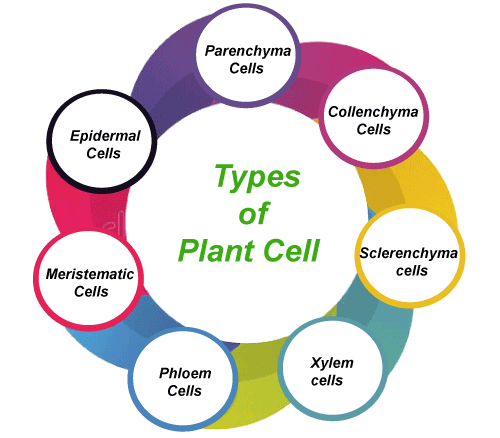
1) Parenchyma Cells
These live-cell cells of green color are found in various places at the plant bodies. These cells participate in the different mechanisms of plant-like photosynthesis, secretion of waste material, and food storage.
Parenchyma cells are non-vascular simple permanent ground tissue in plants. These cells don’t have a permanent shape as they can adapt and differentiate in various cells. There are different types of parenchyma cells:-
- Chlorenchyma
- Aerenchyma
- Prosenchyma
- Vascular parenchyma
- Medullary Parenchyma
- Conjunctive Parenchyma
- Armed parenchyma
Characteristics of parenchyma cells
- Parenchyma cells can associate with another type of cells to form complex tissue-like parenchyma of phloem and xylem.
- A plant’s reproductive cells (spores, gametes) are parenchymatous.
- Also named totipotent cells as they single cell (zygote) can develop into a whole plant.
- These are permanent living tissue that divides themselves at their maturity state and help in the healing of wounds (regeneration)
- Involve in the essential activities of the plant-like storage, excretion of waste, photosynthesis, respiration, assimilation, and transportation of water and solute.
- Parenchyma combines with an epidermal cell that contributes to light penetration, gas exchange, and absorption.
- Present in root tubers such as leguminous plants and potatoes.
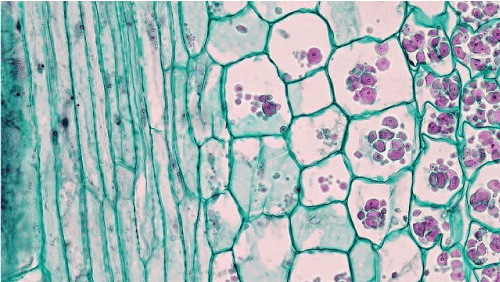
2) ollenchyma Cells
These cells are present on the outer layer of the plant stem, vascular and leaves or below the epidermis tissue. These are derivatives of the meristems and become alive after maturing up. Observing under the microscope appear in red and occur in the peripheral position of the stems and petioles.
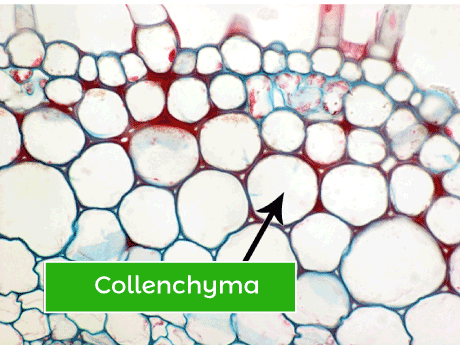
A most common type of collenchyma is:-
- Lamellar collenchyma – In this type of cell, when a cell is at a tangible position, all the cells are thickened and arranged in a lined row.
- Lacunar collenchyma – Existence of space between the cells.
- Annular collenchyma – Here, cells walls are thick but uniformly.
- Angular collenchyma – Here, all the intercellular contact points are thick.
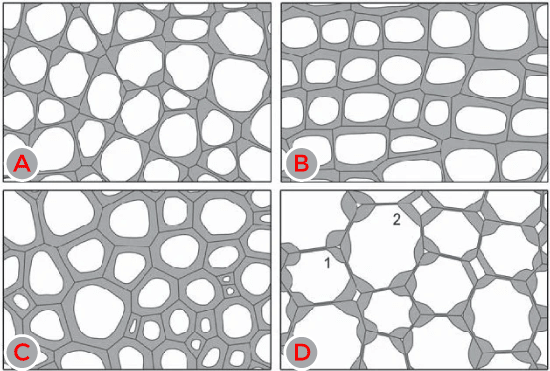
These cells are rigid and hard. Due to this, they support the plant when there is a hindrance in the growth because of the minimum presence of hardening agents in primary walls.
Collenchyma cells are the reason behind the strength and support of the herbaceous and woody plants (their organs). Collenchyma cell walls are not evenly spread in all the plant positions as they get adjusted according to the expansion of the growing part of the plant.
3) Sclerenchyma Cells
Sclerenchyma cells are matured collenchyma cells with the secondary cell wall. Collenchyma cells have an agent that strengthens their cell wall. These cells are helpful in anchoring and giving support to the plants and are mainly found in plant roots.
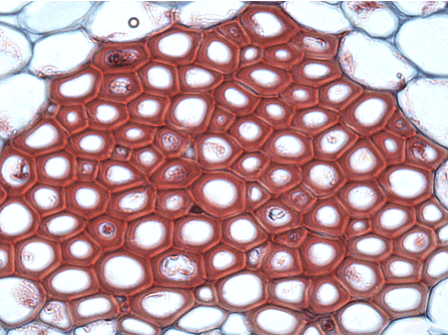
There are two types of sclerenchyma cells:-
- Fiber cells
- Sclereid cells
Functions of sclerenchyma cells
- Sclerenchyma cells provide protection and support to other plant tissue (fiber of large herbal tree and woody tree trunks).
- Fibers of sclerenchyma are used in making yarns, fabric, and threads.
- Hardening agents in the cell harden the cell walls that cause damage to the digestive tract of larval stage insects (in peach fruits).
Sclerenchyma cells have a lignified cell wall consisting of cutin and suberin, making them waterproof. They cannot live so long until they fully develop their functional maturity and exchange materials for cellular metabolism.
4) Xylem Cells
Xylem cells are found in woody plants in the vascular tissue of plants. These cells consist of two elements for conduction, such as vessel and tracheids elements. These elements help transport minerals, water, soluble nutrients, and inorganic ions upward from the root of the plants and their plants.
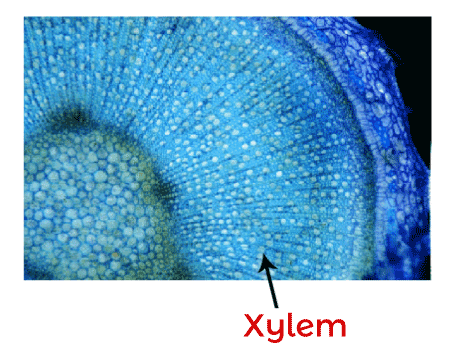
Tracheids are present in ferns, gymnosperms and pteridophytes. They have overlapping tap ends that allow connection and communication from cell to cell.
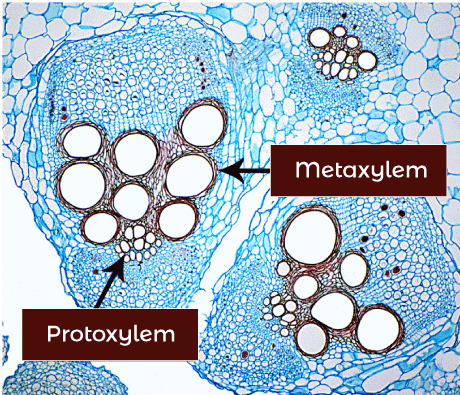
Vessel elements are present in flowering plants and allow the transport of water. These elements are shorter, wider hollow than the tracheids.
5) Phloem Cells
Phloem cells are responsible for transporting food in all directions, from leaves to other parts of the plants. These cells are present outside the xylem layer of cells and have a flaccid cell wall.
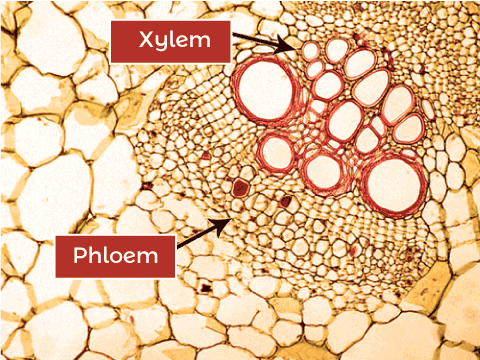
They also lack tensile strength that allows them to move internal material at high pressure. At their maturity, they become alive as they need the energy to move materials.
There are two types of phloem cells:-
- Sieve tubes
Sieve tubes are long with trapped overlapped ends. They allow the flow of dissolved food such as sucrose. Moving of material happens due to the association of the sieve cell with the albuminous cell into the phloem. These cells have pores all over their cell wall surrounded by callose (a carbohydrate type that repairs the pores after an injury). - Sieve tube members and Companion cells
Sieve tube members are highly packed together and arranged from one end to another end into the sieve cells. They are shorter and wider. They are linked together to control cell metabolism with many plasmodesmata. Companion cells help move the materials through the sieve tube membrane.
6) Meristematic Cells
Meristematic cells divide themselves continuously until the plant is alive, and the process is known as meristems. These cells can renew themselves and have a high metabolism to control them. These cells are responsible for the shape and size of the plant (including the size of leaves, length, and width size of a plant).
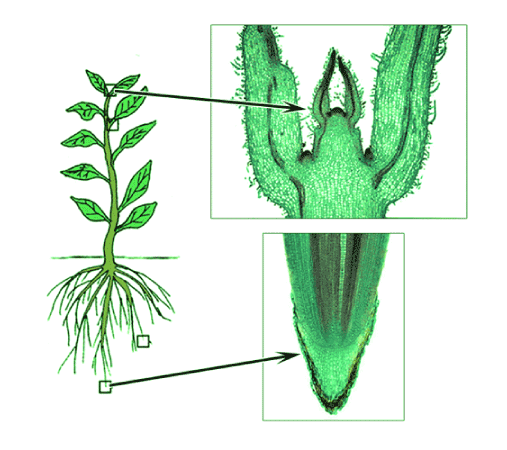
There are different variety of meristematic cells found in the plants:-
- Intercalary meristems – These cells are responsible for the variance size of leaves as they are present at the base of the leaves.
- Apical meristems – The length of the plant depends on this cell as it is present on the root and stem tip of the plant.
- Lateral meristems – These are responsible for the thickness of the plant as they are present in the radial part of the stem and root of the plant.
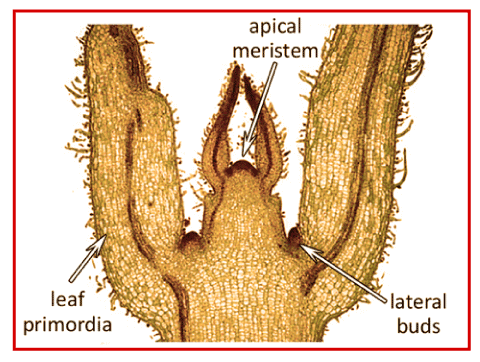
7) Epidermal Cells
Epidermal cells mainly cover the leaves, seeds, roots, and stems of a plant. They prevent water loss from the plant as these cells are covered with a waxy cuticle layer and protect the plant from pathogenic invaders like fungi.
These cells are tightly packed without intracellular space.
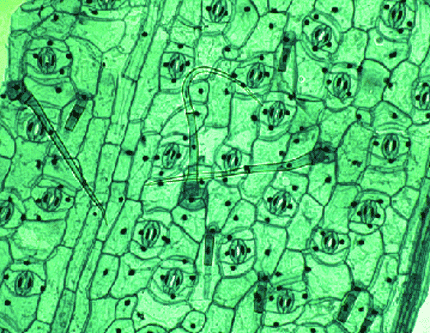
Epidermal cells protect the plant against high temperatures, chemical exposes (radiations), pathogens, etc. Different types of epidermal cells play different roles.
- Trichomes
- Stomatal guard cells
- Pavement cells
